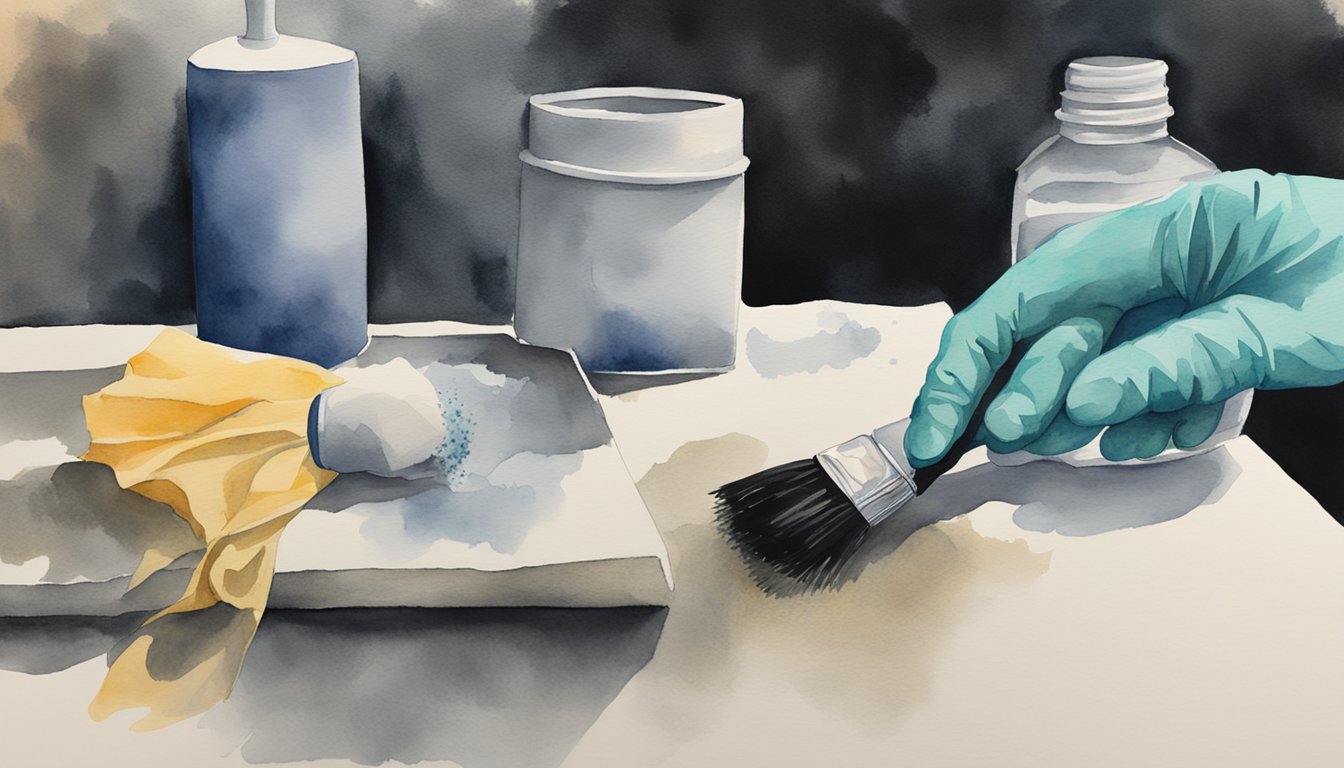Call us: (631) 270 9692
Black mold is not only unsightly but also a potential health threat if not handled properly. As a homeowner, knowing how to clean black mold efficiently is crucial for maintaining a safe living environment. Using common household cleaners and safety precautions, you can effectively remove black mold from your home.
Mold removal involves a few straightforward steps. Start by identifying the affected areas and make sure to wear protective gear, like gloves and a mask. Then, using a solution of soap and water, scrub the moldy surface thoroughly. For tougher spots, you might need a stronger solution, such as a mix of bleach and water.
Preventing the return of black mold is equally important. Ensure your home stays dry and well-ventilated to discourage mold growth. Regularly check for leaks and address any moisture issues promptly. For detailed steps and tips, you can visit guides from Bob Vila, The Spruce, and other experts.
Understanding Black Mold
Black mold is a type of fungus that thrives in damp, humid environments. It is known for causing various health issues, and identifying and addressing it promptly is crucial for maintaining a healthy living space.
Identifying Black Mold
Black mold, or Stachybotrys, typically appears as dark green or black patches. It can have a slimy texture and often grows on materials like drywall, wood, or carpet. You may also notice a musty odor in areas where black mold is present. It’s important to distinguish black mold from other types of mold because of its potential health risks. Mold spores from black mold can cause allergic reactions and other health problems, especially in individuals with respiratory issues.
Health Risks Associated with Black Mold
Exposure to black mold and its spores can lead to several health problems. Inhaling or coming into contact with mold spores can cause allergic reactions such as sneezing, skin rashes, and red eyes. People with asthma or other respiratory conditions may experience wheezing and shortness of breath. Long-term exposure to black mold can lead to more severe issues like chronic sinus infections and weakened immune systems. It’s critical to address mold growth promptly to minimize health risks.
Where Black Mold is Commonly Found
Black mold is often found in areas with high moisture levels. Bathrooms, basements, kitchens, and areas with water damage are common spots. Leaky pipes, roofs, and windows can create an environment conducive to mold growth. Pay special attention to spaces that lack proper ventilation, as they tend to retain moisture more easily. Regularly inspect these areas and address any dampness or water leaks immediately to prevent mold from developing.
By identifying black mold early and understanding the health risks it poses, you can take the necessary steps to eliminate it and keep your home safe.
Removing Black Mold Safely
To safely remove black mold, focus on protective gear, appropriate cleaning agents, and following a clear process.
Safety Precautions and Protective Gear
Before starting, wear protective gear like gloves, a mask or respirator, and goggles to avoid exposure to mold spores. Good ventilation is essential, so open windows and doors to let in fresh air. Never mix cleaning agents like bleach and ammonia as this can create toxic fumes.
Choosing the Right Cleaning Agents
Choosing the right cleaning agents ensures that mold is effectively removed. Hydrogen peroxide is effective for killing mold. Alternatively, you can use a solution of bleach and water, with a ratio of ¾ cup bleach to a gallon of water. Vinegar is also a good natural option. Avoid using ammonia as it’s less effective for mold on porous surfaces.
Step-by-Step Mold Removal Process
Start by scrubbing the affected area with warm, soapy water and a scrub brush to loosen the mold. Apply your chosen cleaning agent—hydrogen peroxide, bleach solution, or vinegar—and let it sit for at least 15 minutes. Afterward, scrub the area again and rinse with clean water. Ensure the area is dried thoroughly to prevent mold from returning. Using a dehumidifier can help speed up drying and reduce moisture.
Prevention and Maintenance

To prevent black mold from returning, it’s important to manage moisture and humidity levels and conduct regular inspections. If needed, professional help should be sought to ensure thorough treatment.
Controlling Humidity and Moisture
Preventing black mold starts with controlling moisture. Moisture and humidity create ideal conditions for mold. Using a dehumidifier can help you manage indoor humidity levels. Aim to keep humidity below 60%.
Ensure your home is well-ventilated. Use exhaust fans in bathrooms and kitchens where moisture is common. An air conditioner can also help reduce humidity. Check for leaks regularly and repair them promptly. This includes plumbing leaks and leaks around windows or roofs.
Regular Inspection and Maintenance
Regular inspections are critical. Check for mold in hidden spots like under sinks, behind appliances, and in basements. Set a schedule for these inspections, perhaps monthly or quarterly.
Focus on areas with water use or high humidity. Look for signs of leaks, moisture, and mold. Addressing small issues early prevents major problems. If you spot any moisture source, such as a dripping pipe, fix it immediately.
Proper maintenance can also include regular cleaning routines. Clean areas prone to moisture to prevent mold build-up.
When to Call Professionals
Sometimes, professional help is necessary. If mold covers a large area or you have recurring issues, consider professional mold removal. Professionals have the right tools and expertise to handle extensive mold safely.
You should also call professionals if mold causes health issues like allergies or asthma. Mold can release spores that affect air quality, making thorough removal important. When buying or selling a home, a professional mold inspection ensures there are no hidden problems.
Knowing when to seek expert help ensures your home stays mold-free and safe for everyone. Proper care and quick action can prevent mold from taking hold in your living spaces.





